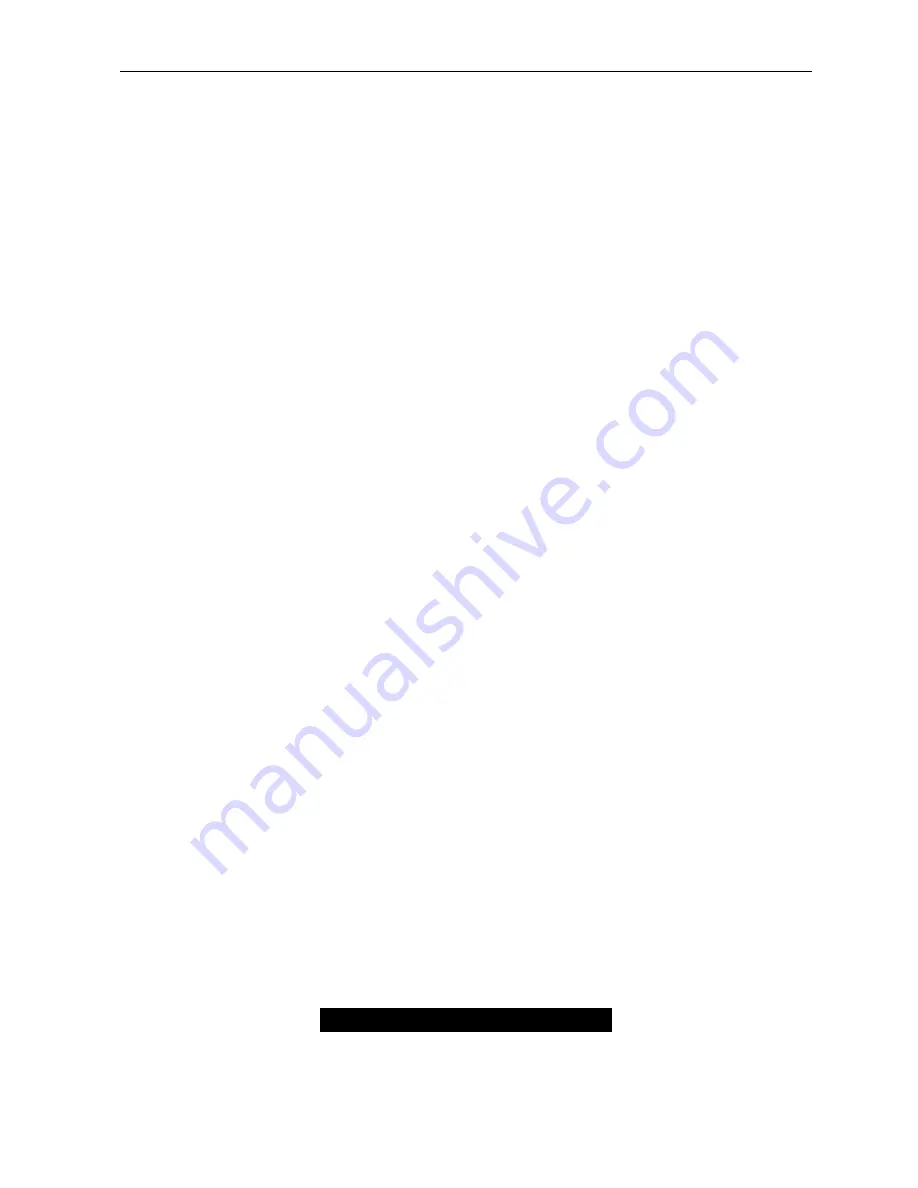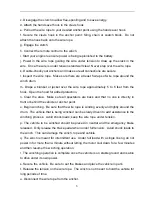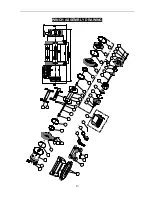
5
on the wire rope by as much as 50%. When doubling the line back to the
vehicle, attach to the frame or other load bearing part.
•
The vehicle engine should be kept running during operation of the winch to
minimize battery drain and maximize power and speed of the winch. If the
winch is used for a considerable amount of time with the engine off, the battery
may be drained and too weak to restart the engine.
•
Get to know your winch before you actually need to use it. We recommend that
you set up a few test runs to familiarize yourself with rigging techniques, the
sounds your winch makes under various loads, the way the cable spools on the
drum, etc.
•
Inspect the wire rope and equipment before each use. A frayed or damaged
rope must be replaced immediately. Use only the manufacturer’s replacement
rope with the exact specifications.
•
Inspect the winch installation and bolts to ensure that all bolts are tight before
each operation.
•
Never connect the cable back to itself. This will cause cable damage. Always
use a snatch block, sling or chain of suitable strength as shown in the
illustrations.
•
Store the remote control inside your vehicle in a place that it will not be
damaged.
•
Any winch that appears to be damaged in any way, is found to be worn, or
operates abnormally shall be removed from service.
•
Pull only on parts of the vehicle as specified by the vehicle manufacturer.
•
Only attachments and/or adapters supplied by the manufacturer shall be used.
•
Whenever before your winch start to working, please slightly test-run your
winch in two direction, even if the winch drum only round a few degree of angle,
ensure the winch is well-balanced, especially after you operated the clutch,
test-running winch can make winch in gear.
WINCHING TECHNIQUES A-Z
a. Take time to asses your situation and plan your pull.
b. Put on gloves to protect your hands.






























